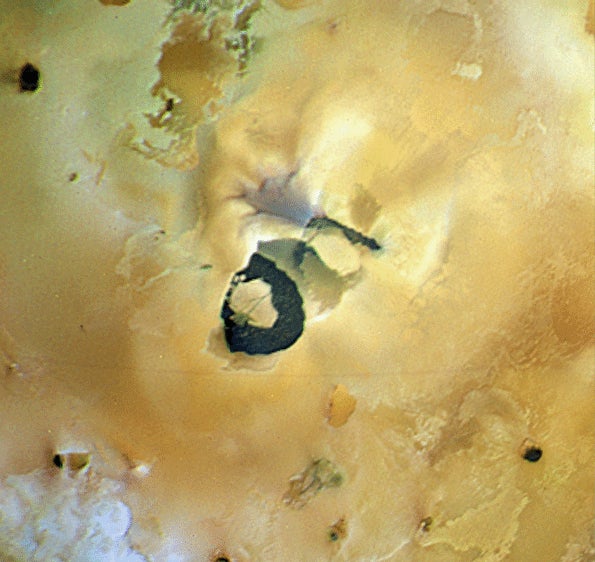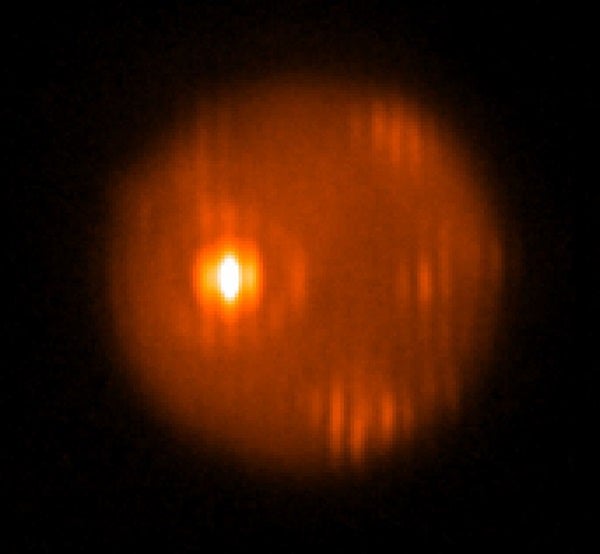Case in point: Earlier this year, a team of astronomers detected changes in one of Io’s biggest volcanoes, Loki Patera. Team member Michael Skrutskie of the University of Virginia reported the discovery on Thursday at the 46th annual meeting of the Division for Planetary Sciences in National Harbor, Maryland.
The researchers observed Io with the Large Binocular Telescope (LBT) — twin 8.4-meter mirrors on a single mount that together have the resolving power of a single 75-foot (22.8m) telescope. They viewed Io at an infrared wavelength of 4.8 micrometers, which is optimal for picking up volcanic heat signatures, on a night when its neighboring moon Europa passed directly in front of Io.
With its continually changing landscape fueled by massive volcanic eruptions, Io seems in no danger of losing its status as my favorite moon.
Check out the rest of the LBT’s images of Io by visiting http://goo.gl/pj5ZTx.











